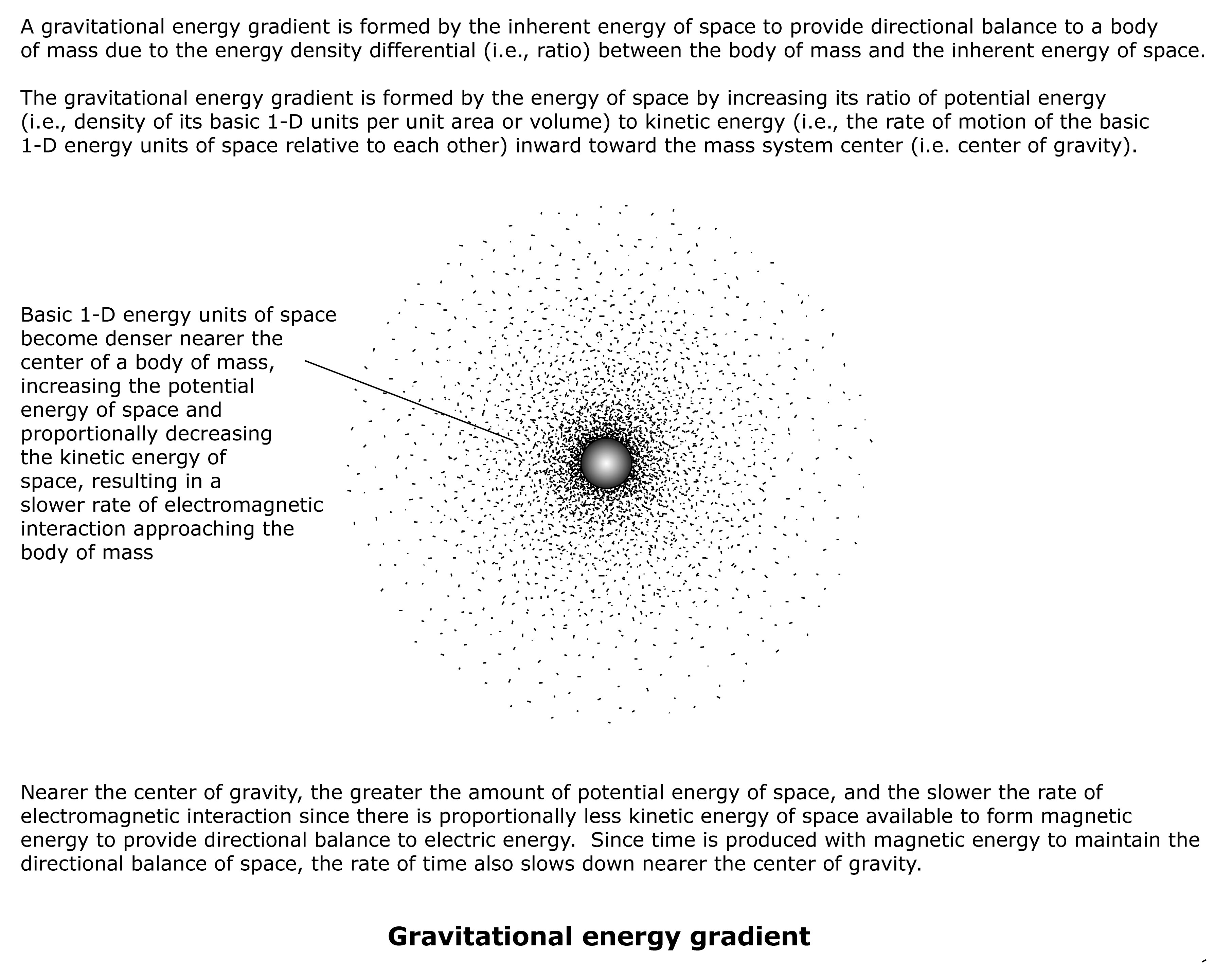 This model of hypothetical elementary energy systems is based on the premise that all space is composed of basic 1-D units of energy in constant random motion and distribution relative to each other, creating a directionally balanced energy system, composed of 1-D, 2-D, and 3-D space.
This model of hypothetical elementary energy systems is based on the premise that all space is composed of basic 1-D units of energy in constant random motion and distribution relative to each other, creating a directionally balanced energy system, composed of 1-D, 2-D, and 3-D space.
When the energy of space becomes non-random, it creates local unidirectional, or electric, energy. The energy of space reacts by forming opposing energy to provide directional balance, including magnetic energy (e.g., in photons), time energy, and gravitational energy.
All energy, left alone, moves toward directional balance or its lowest possible energy level. In addition to the directional balance provided by the opposing energy of space, unidirectional energy may directionally oppose itself. Entanglement is the most prevalent way that unidirectional energy systems provide each other with directional balance. For example, opposing electromagnetic energy systems (e.g., electron/positron or e-+/e+- particles) usually exist in an entangled relationship, providing each other optimal directional balance.
There are two types of unidirectional energy:
1) energy in motion relative to system center (electromagnetic energy), and
2) energy not in motion relative to system center (gravitational energy gradients)
